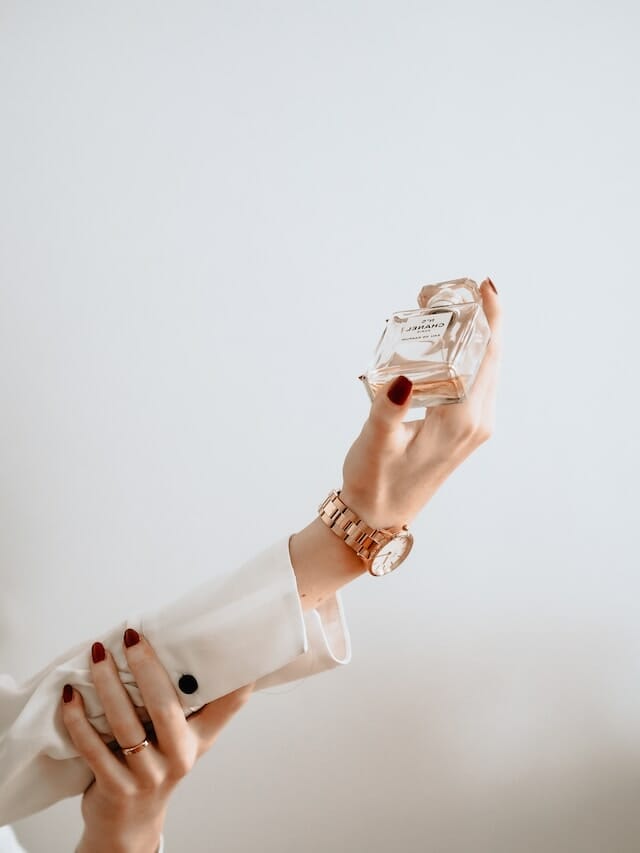
Adornment and seeking beauty have always been a part of our existence, as human beings. We have made beautiful totems that hold power, and give us a sense of belonging and status for centuries.
How that turned into a new exclusive category of products, services, and experiences has to do with how our society sold us on conspicuous consumption. A term first coined by sociologist Veblen, to describe how in modern societies what you bought could signify your affluence, your power, your capacity to afford certain things, and your socioeconomic status. A status that others would then crave and admire.
This has reached exponential levels in our time with an Hèrmes Birkin Bag costing around 10,000 to 250,000 dollars as of 2023. It is no wonder that one of the most-watched shows of the past years has been Succession. One where we follow the outrageous lives of a Murdoch-like family who throws around clocks that are worth millions and take private jets just to avoid traffic.
This spell for glamour is one I have also been captivated by. Especially when it comes to the finely constructed items that an haute couture maker or indigenous artisan can concoct. But when that natural craving for beauty comes at the cost of people and the planet, we must ask ourselves: Is luxury sustainable or even worth it?
Whether it’s high-end fashion, luxury cars, or extravagant vacations, the environmental impact of this consumption is undeniable. Luxury brands, with their global reach and high demand, contribute significantly to environmental degradation. They also contribute to social impact with their mostly opaque supply chains, cultural appropriation, and the marketing of unattainable lifestyles to promote overconsumption.
In this post, we will explore what the meaning of luxury is and could be, as well as its environmental, and ethical dimensions so that we can gain a deeper understanding of the impact of luxury consumption in our current world.
What is luxury?
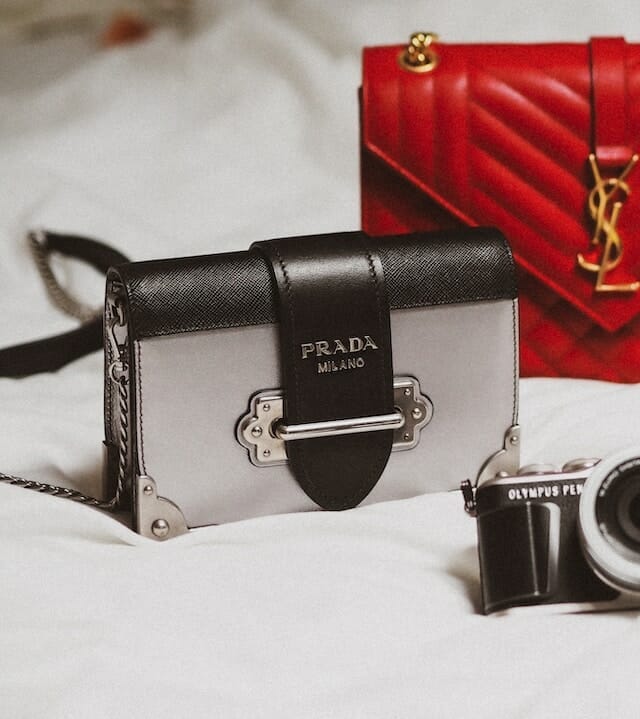
Luxury has been a term hard to pin down. The Oxford Dictionary equates it with “great comfort or elegance, especially when involving great expense.”
This is the luxury we have been used to aspiring to, one equated with extravagant wealth, big houses in the Hamptons, a closet filled with Manolo Blahnik shoes, and staying in a lush hotel in Dubai. A Crazy Rich Asians book fantasy.
When it comes to luxury, most people think of, indeed, high-end, unique, quality, durable items that are exclusive and of course, expensive. As well as experiences such as dining at a Michelin-star restaurant or taking a vacation to a far-off place.
This kind of luxury usually implies the use of unnecessary resources, an excessive carbon footprint, both in production and transport, and a mindset of acquisition, accumulation, and extraction: all in favor of getting top-quality goods and experiences for show.
But it does not need to be this way.
Luxury is power, and not just economic but symbolic. And it could use this power of communicating and creating a desire to reinvent what we crave and deem valuable.
The luxury industry could wield its symbolic power for good. But to see how we need to understand the current environmental and social impacts that make luxury problematic.
Is luxury sustainable? Let’s discuss.
To investigate whether luxury can be sustainable we must consider both its production process and how the products are used. We must look at the effects luxury has on our environment, which are intrinsically connected to the well-being of the people who make it.
But who are the people who are consuming luxury and how big are the environmental effects of said consumption? The people who are consuming more are always the ones from higher-income countries in the Global North, and within them, the wealthiest people.
The environmental impact of luxury travel

One example of this is the luxury travel industry. One with commodities like private planes or superyachts that only the ultra-rich can afford. An average 71-metre superyacht uses 107,000 gallons of gasoline a year and produces 2.1 million pounds of CO2 emissions in that time, which, to put in perspective is the amount of CO2 202 cars would produce annually, according to researchers of various universities from the US.
This excessive way of living is fueled by taking resources from the Global South to feed the consumption needs of the wealthy in the global north in what theorists call a metabolic rift. A process by which materials are transferred in an unequal ecological exchange between nations to feed the wheel of global capitalism.
The environmental impact of luxury fashion

Luxury fashion acts in the same way. The grassroots organization stands.Earth studied nine luxury brands in their report Fossil-Free Fashion Scorecard 2023, and most of them got a score below C.
The study included brands such as Giorgio Armani, Chanel, Prada, Ferragamo, and the conglomerates KERING and LVMH. Together, they emitted 13.5 million metric tons of CO2 to create products in 2021. Which, for reference, is the same amount of emission as the country of Lithuania.
Not only that, of all the nine companies, only KERING has committed to phasing out coal power in favor of 100% renewable energy by 2030. And only 6 companies provided partial supplier lists. LVMH does not have a supplier list, only some of their brands like FENDI do, for example.
It has also been proven that a lot of the luxury leather comes from the Amazon biome, which has connections to deforestation in Brazil. Indeed, stand.Earth discovered ties between one of the largest contributors of deforestation in the Amazon rainforest, JBS, and brands such as Armani, Louis Vuitton, Fendi, Chloé, Michael Kors, and Prada.
Not to mention, luxury brands have been burning unsold goods to keep up the illusion of exclusivity and not have to lower their prices, which Burberry, for example, was found doing in past years. With the European legislation to ban the destruction of unsold goods, this is no longer an option for companies within Europe. But what about the tons of goods that end up in the countries from the Global South where there is no region-wide legislation for that?
The environmental impact of luxury beauty
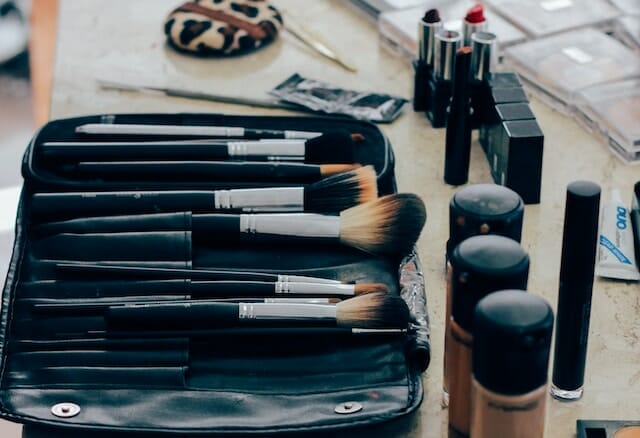
When it comes to the environmental impact of luxury beauty it goes from its resource extraction to its chemical use and waste, all the way to unnecessary and plastic-filled packaging with no usual take-back programs.
Palm oil, for example, is an ingredient wildly used in beauty and skincare. It is found in 70% of US cosmetics for its vitamin E and fatty oils. In 2018 Greenpeace found that palm oil suppliers were responsible for the deforestation of approximately 500 square miles of southeast Asian rainforest. And these palm oil plantations are usually located in peatlands, which contain about 2 billion tons of carbon. When they are dug, drained, and burnt, they release all of this carbon into the atmosphere. Not to mention the indigenous communities, stewards of the land, that are displaced by that deforestation.
In packaging alone, the cosmetics industry produces 120 billion units of packaging a year, of which about 67% volume is plastic, according to Vantage Market Research. High-end beauty products tend to be more heavy on the packaging side. Not only that, but beauty containers are usually not made to be recycled in municipal centers.
There’s also the question of chemicals that not only end up in water streams but also in our bodies through our skin or ingestion in the case of lipstick. The use of preservatives, parabens, and PFAs that have been linked to cancer, liver issues, and hormone disruption among others, was widespread among beauty brands, according to a study that took 231 samples. Each of them contained 9 to 13 different types of PFAs.
Ethical considerations and social responsibility in luxury
Luxury consumption is not only about indulgence; it also carries ethical implications. Conspicuous consumerism perpetuates social inequality, as the pursuit of luxury often widens the gap between the rich and the poor, is extractive in terms of land and cultural appropriation, and has been linked to modern slave labor.
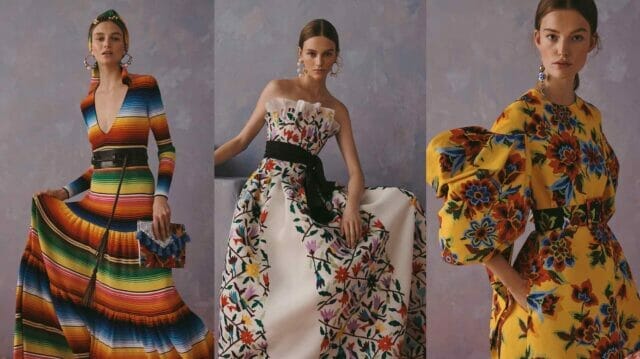
Social impact of luxury fashion
Even though luxury fashion evokes images of expert artisans, embroidering Dior dresses in their beautiful ateliers, the fact that something is luxury does not mean that the workers are treated well or paid fairly.
Additionally, cultural appropriation has been an issue in the luxury fashion industry for centuries, it has a heritage of colonialism. An example of this is how Carolina Herrera has been accused of ripping off indigenous designs from Mexican creators.
Finally, the Global Slavery Index, made by Walk Free, found that luxury fashion brands are “one of the poorest performers in terms of addressing risks of forced labor within garment supply chains”. Not only that, the Clean Clothes Campaign shared with them that the living wage gap of luxury garment workers is 53% higher than the one found in non-luxury brands.
Social impact of luxury travel
Luxury travel has a couple of social and economic consequences for the local community. Firstly, the demand for luxury stays and hotels drives up property value, resulting in rising rent and the inability of local people to afford housing in an area where they previously could.
Secondly, local businesses that have operated in the area for years, owned by generations of local families, can also be displaced by luxury ones that cater to the new population of travelers.
Thirdly, luxury travel can also lead to cultural homogenization, because of the displacement of indigenous and local communities, whose practices are connected to the land. This can mean anything from loss of language to loss of craftsmanship and cultural stories.
Examples of this in the global south are Bali in Indonesia and Rio de Janeiro in Brazil, linked to events like the Olympic World Cup; Cape Town in South Africa sought out for its beautiful beaches that attract travelers looking for exclusive luxury experiences; Phuket in Thailand, where traditional fishing villages and local businesses have been impacted by the transformation of the island to cater to luxury tourists; or Santa Marta in Colombia, where natural landscapes have been eroded by tourism, and are now closing for seasons a year to regenerate.
Social impact of luxury beauty
Luxury beauty is the pinnacle of aspirational imagery. Brands like La Mer, Kylie Jenner Cosmetics, and even Dior are the ones showing us what being beautiful in today’s day and age means. And it usually means being white, thin, and hairless with Eurocentric features.
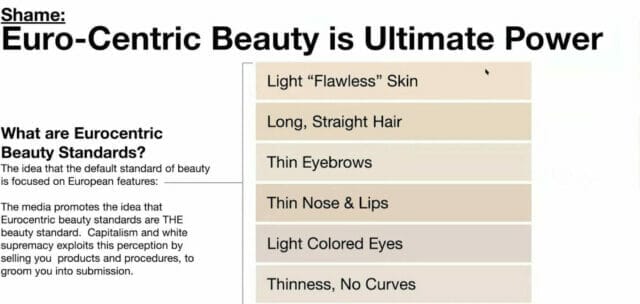
And the thing is that, when the luxury industry does not care to build narratives around beauty that are representative of all the different kinds of people that exist, they are doing a disservice to all of us. They are propagating unrealistic beauty standards, not only through the people they choose as their models, but also by airbrushing them. It has been widely studied how this affects mental health, self-esteem and can even contribute to dysmorphia and eating disorders.
The beauty industry has also been a big perpetrator of cultural appropriation. It is no wonder that the Kardashians have built their beauty empires appropriating black and trans creations, without ever pointing to their origins, or paying the people that made them. An example of this is the now widely used contouring technique.
Beauty brands also appropriate ingredients and formulas rooted in indigenous and black wisdom for centuries, never paying for or giving credit to those who made them. They extract to sell their products at insane prices that keep contributing to feelings of inequality, as well as white-washing BIPOC knowledge. One example of this is Gwyneth Paltrow’s Goop.
Are there sustainable luxury options?
Sustainable Luxury

These impacts call for the usage of responsibly and ethically sourced materials, as well as minimizing waste created during production stages. Additionally, there must be greater transparency from luxurious brands so customers can make knowledgeable purchases that will have a positive environmental effect and fair treatment and payment of the people involved in luxury value chains, who rarely see the money or well-being afforded to its consumers.
Some luxury brands, though, do recognize the urgency of sustainable and social development and innovation. There are forward-thinking companies that are implementing practices towards environmental and social equity.
From using sustainable materials to adopting circular economy principles to supporting indigenous black, and underrepresented communities, they are reimagining the luxury market.
Luxury can make for the perfect trojan horse to turn our consumer culture around if its product, production practices, marketing, and media budget are used to promote mindful lifestyles and a new meaning of conscious luxury.
What that meaning could entail is not only creating high-end, quality, durable products and creating mind-blowing experiences but also feeling like you belong to a tribe that finds joy and pleasure in doing good.
A group of people whose social status is not shown by how many logos they are wearing or the length of their yachts, and is instead signaled by the stories of the people that made the recycled wood stools in their homes; the land regenerated via the material of their purses; or the food sovereignty community travel experiences they were a part of lead by people from the Global South.
This is the type of luxury that we envision. One that values time, heritage, dignity, working conditions, regenerative land management, food sovereignty, as well as cultural continuity of the local people’s wisdom.
Some luxury companies have been putting a greater focus on this. On making eco-friendly luxury products such as organic cotton clothing; furniture created from sustainably sourced wood; jewelry manufactured with recycled metals; cosmetics made with plant extracts rather than harsh chemicals; and emphasizing living in harmony with nature without sacrificing comfort or style.
Here are some luxury options we have found:
The most sustainable luxury fashion brands
From responsible manufacturing to supporting global communities, there are fashion brands that champion fair labor practices and contribute to a more equitable and regenerative society.
One that has been at the forefront of environmentally friendly luxury is Stella McCartney. The designer was raised on her musician parents’ farm with a love for nature and animals. Hence she made it her life‘s mission to make fabulous fashion that is vegan.
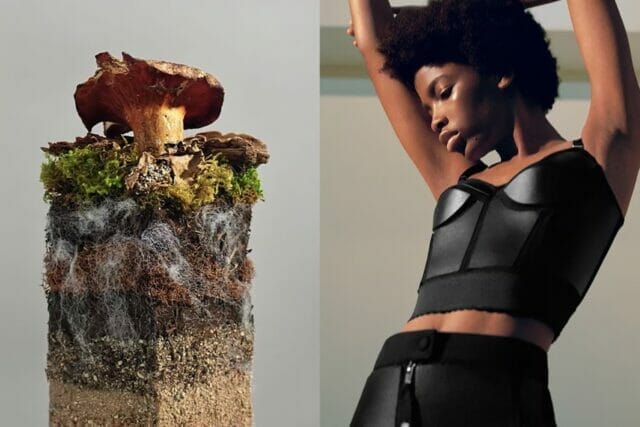
Over the years, her brand has premiered accessories in vegan leather options like Mylo, made from mycelium, clothing made with cradle-to-cradle gold-certified wool, and has worked with recycled Nylon called Econyl. They also measure and share their CO2 emissions from manufacturing as well as their water usage. They help their consumers take care of their clothes with video tutorials and they sell McCartney second-hand on The Real Real to keep their goods in use.
Brilliant Earth is an ethical engagement ring and fine jewelry brand. They offer diamonds from ethical and environmentally responsible origins that do not finance rebellion, protect against human rights abuses, minimize environmental degradation, maintain safe and responsible labor practices, and support community development.

Their suppliers in Canada and Botswana can demonstrate custody of their diamonds and track them and segregate them by origin, either by mine or a specific country. They also offer lab-created and recycled diamonds which require no mining. They are among the first jewelers to work with Blockchain, which promotes transparency and responsibility.

Suitsupply offers sharp professional attire, with a map of its suppliers, the challenges it faces in each factory, and increased transparency. They show progress towards a living wage, and evidence that some of their makers earn it. They disclose their carbon footprint and provide details on improvement.
Note: for more sustainable luxury fashion brands just check out our Brand Guide and look for the brands with “$$$” under the brand description.
The above options were scored by us at Eco Stylist with our focus on transparency, fair labor, and environmental sustainability. However, there are also larger luxury brands and conglomerates, that may not pass our ratings but are making an effort towards making luxury a force for good.
One of these is KERING, the parent company of Gucci, Saint Laurent, Bottega Venetia, and Balenciaga. In the report made by Stand.Earth, Fossil Free Fashion Scorecard, the company got a C. It has a target to use one hundred percent renewable energy by 2030 and was the founder of the Fashion Pact. They signed a letter calling leaders to continue the path towards the Paris Agreement target, accelerating actions in terms of carbon emissions biodiversity, and water stewardship. The company is also working on material innovation in closed-loop fibers biomaterials, through its material innovation lab.
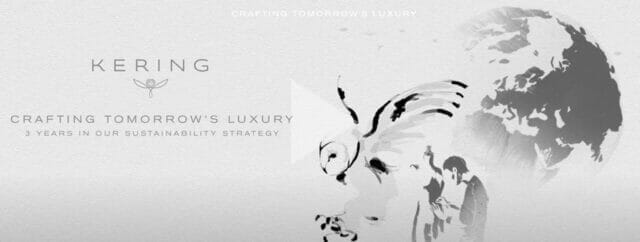
However, they do not have a policy to phase out fossil fuel materials or show the volume of that unsold stock, or how they manage, reduce, and dispose of this waste.
Sustainable luxury travel

A traveler looking for amazing experiences that connect them with nature and have a good impact on the community could look at initiatives that are contributing to biodiversity, regenerative land management, and community initiatives, as well as less carbon-intensive modes of transportation.
One such experience is the map of community-centered tourism in Colombia. It filters nature, culture, sun, and beach experiences. Xplora Nuquí, for example, is an afro women-led travel community experience, set on the Pacific coast, where travelers can experience its nature, cuisine, and coconut-based enterprises.
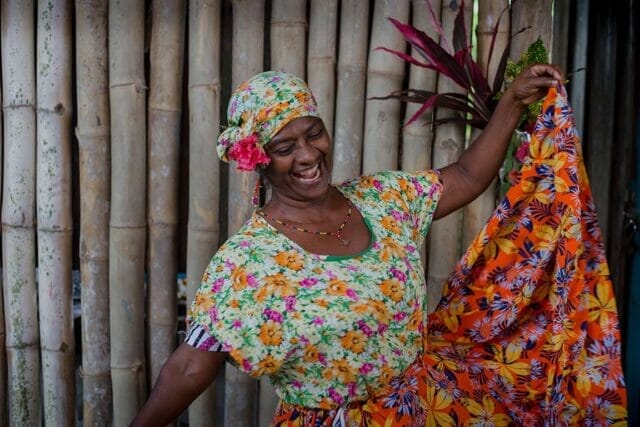
Blue Apple Beach is another option on the Atlantic coast of Colombia, on the Island of Tierra Bomba, that is B Corp certified and a member of the Regenerative Resorts Collection. Over 60% of their spending is with micro-businesses, and 30% with minority-owned businesses.
Intrepid Travelling is a B Corp-certified traveling company that offers adventurous travelers premium options in Africa, Asia, and South America, like a tour of the national parks of Patagonia.
Sustainable luxury beauty
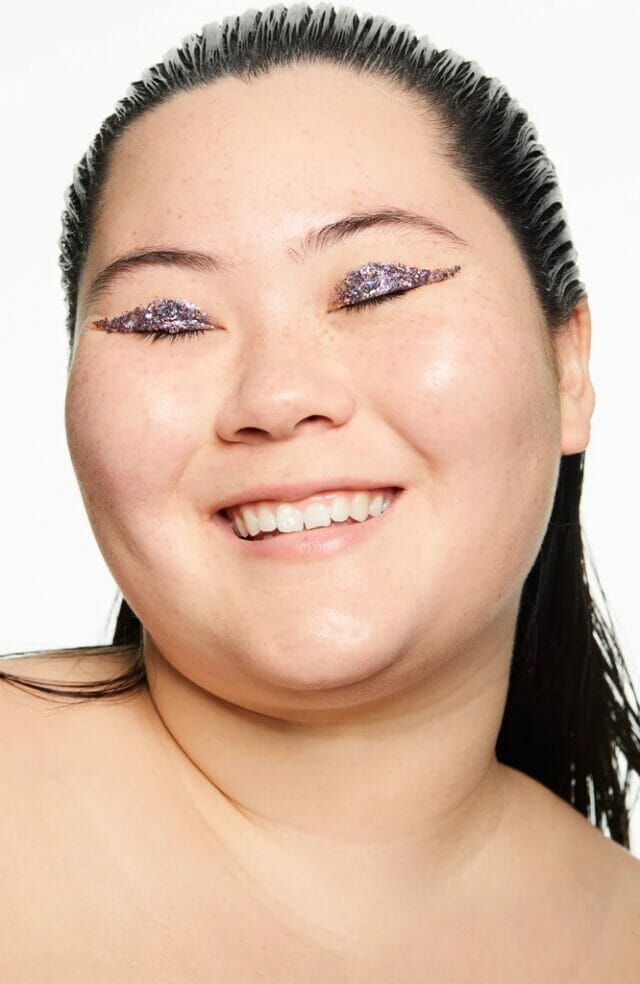
Luxury beauty brands are increasingly embracing environmentally responsible practices that have positive impacts on the planet. These brands often prioritize sustainable sourcing of ingredients, opting for organic, natural, and ethically harvested materials. By doing so, they reduce the environmental footprint associated with resource extraction and promote biodiversity conservation. Furthermore, luxury beauty brands are leading the way in innovating sustainable packaging solutions, such as using recyclable, biodegradable, and reusable materials. This helps mitigate the issue of plastic waste and encourages more responsible disposal practices among consumers.
Luxury beauty brands are also now recognizing their role in fostering positive social impacts beyond their products. Many of these brands engage in initiatives that support local communities, particularly in regions where ingredients are sourced. By implementing fair labor practices, providing employment opportunities, and supporting economic development, luxury beauty brands can contribute to improved livelihoods for individuals and families.
Moreover, some luxury beauty brands leverage their influence to address societal issues, such as gender equality education, mental health, and body image issues. Through partnerships with non-profit organizations and charities, these brands channel their resources towards philanthropic efforts that benefit marginalized groups and promote social progress.

Some of these brands are natural skincare company, Tata Harper; non-toxic, PFAs-free, Rudolph Care; Non- toxic, bio glitter maker TooD, founded by Shari Siadat, with the mission to decolonize beauty; and mental health-focused Rare Beauty.
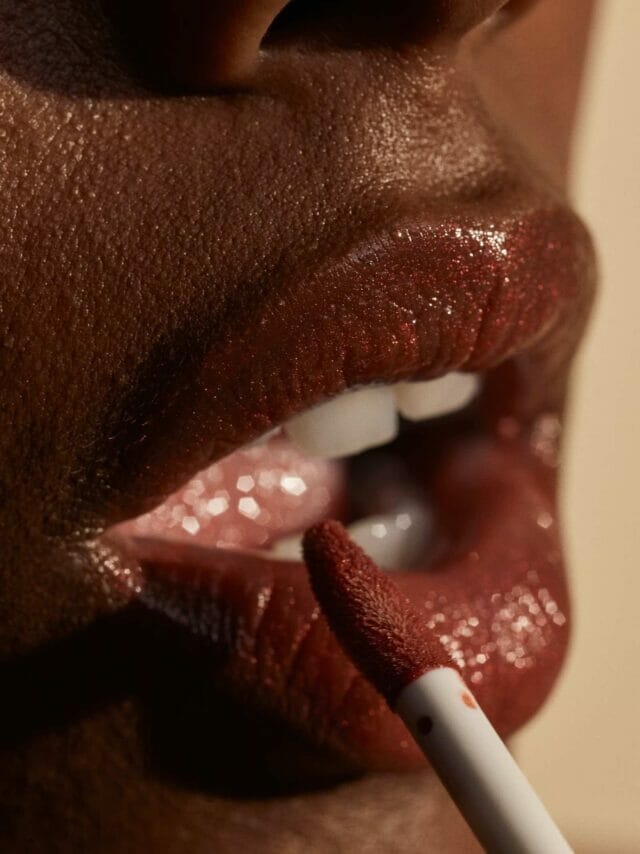
What can we as consumers do?
Let us make conscious choices as consumers. Support luxury brands that prioritize sustainability and ethical manufacturing practices. By demanding and embracing responsible luxury, we can drive the industry toward a more sustainable future. Together, we can redefine luxury in a modern world and create a world where indulgence and sustainability coexist harmoniously.
Key takeaways:
- Luxury consumption has a significant environmental impact, including carbon footprints and resource depletion.
- Some luxury brands are adopting sustainable practices and paving the way for a more environmentally conscious market.
- Conscious consumption and sustainable practices are essential in the luxury industry to mitigate environmental damage.
- Luxury consumption perpetuates social inequality, but luxury brands have the power to address social issues.
- Responsible manufacturing and support for global supply chains are crucial for a more equitable luxury industry.
- Luxury brands can combat climate change by promoting environmental sustainability and adopting circular economy principles.
- Consumers must be aware of greenwashing and support brands that prioritize responsible and eco-friendly practices.
- Sustainable fashion and eco-tourism offer a path to bridging luxury and sustainability.
- Luxury brands embracing sustainable fashion and eco-tourism contribute to a more responsible and eco-conscious industry.

Adela is a Colombian storyteller, content maker, strategy consultant, & event producer, specializing in sustainable fashion, mental health, and gender issues.





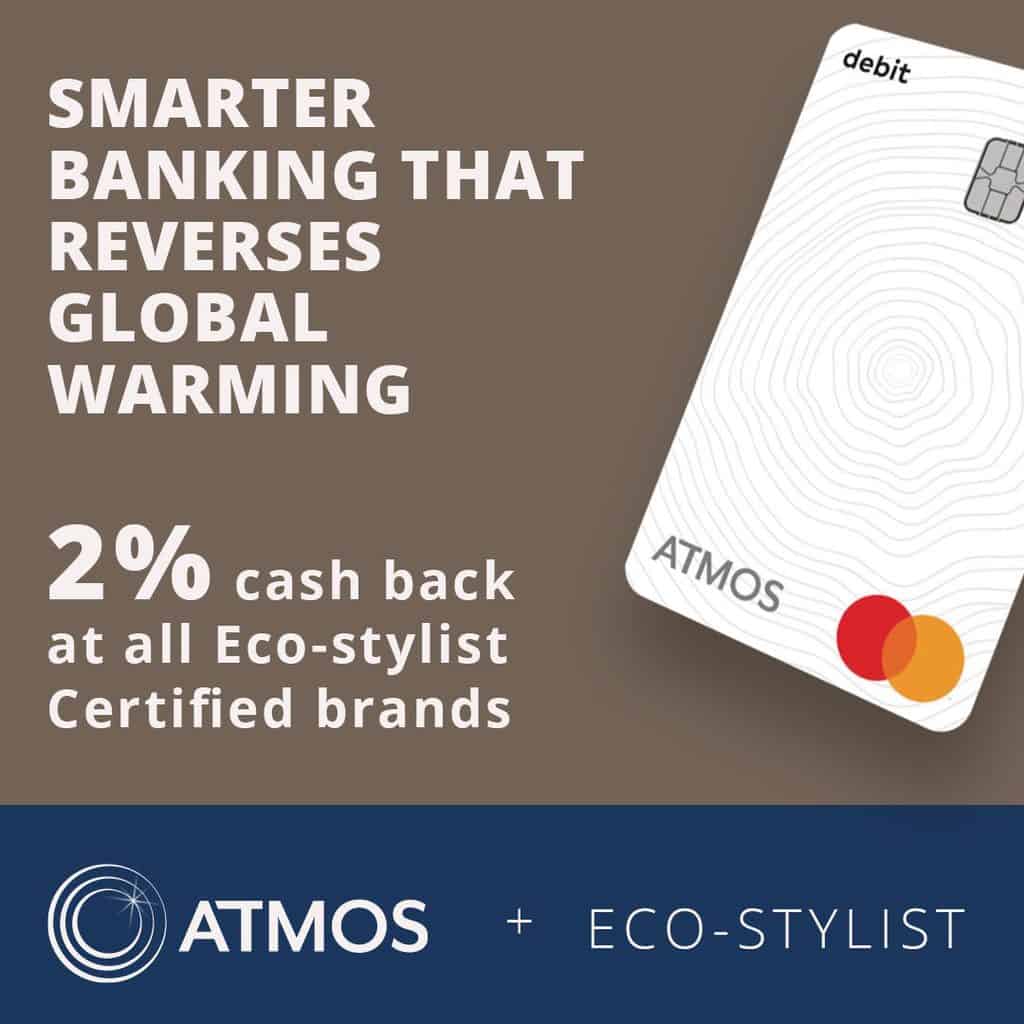





2 thoughts on “Is Luxury Sustainable?”
This was a really interesting read, Adela! I think the misconception that there is a correlation between price and ethical practice is widespread, and it was great to see this debunked in your article. Many consumers might be under the impression that paying a high price for luxury fashion means the garments are created sustainably and workers are treated fairly, but this is tragically not the case. It’s quite confronting to realise many luxury brands have the resources and capability to ethically create their garments and are choosing not to. I liked that you included the responsibility luxury brands have to transform the industry and addressing social issues. I also appreciated your inclusion of the most sustainable luxury fashion brands.
I think consumer education is a really important part of creating a circular fashion system and minimising the negative impact that fashion industry has on the environment. Articles like this are a great way for consumers to gain a better understanding on some of the key fashion issues and ways they can make a positive impact on the industry. Do you have any other tips or resources you’d recommend to people trying to learn more about sustainable fashion?
Hi Sophie! Thank you so much for your comment. I recommend you look at Slow Fashion, The Sustainable Fashion Forum, Fashion Revolution. And I agree consumer education is key!